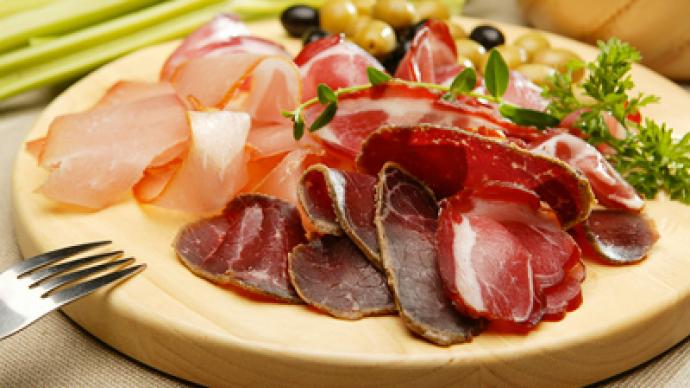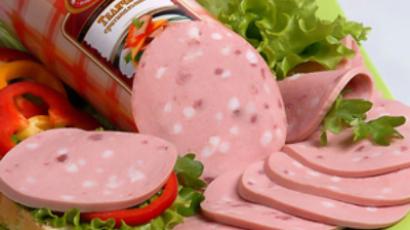Cherkizovo posts FY 2010 net income of $144.44 million

Russian meat producer, Cherkizovo Group, has posted a FY 2010 net income of $144.44 million under US GAAP.
The net results is up 21% year on year in US dollar terms from the FY 2009 net income of $119.4 million, with FY dollar denominated adjusted EBITDA rising 20% year on year to $218.7 million, as FY US dollar denominated revenues rose 17% to $1.188 billion.Cherkizivo noted the results looked marginally better in the reporting currency (US dollars) than their Russian rouble operating currency with rouble denominated FY 2010 net income up 16% year on year to 4.386 billion roubles, with FY 2010 rouble denominated adjusted EBITDA up 15% to 6.641 billion roubles, with FY 2010 rouble denominated sales up 12% to 36.085 billion roubles.The company said the results reflected increased sales coupled with higher prices as the company added capacity to both its poultry and pork operations, underpinning longer term profitability according to Cherkizovo Group Chief Executive Officer, Sergey Mikhailov, who added that rising costs during 4Q 2010 had crimped the FY result.“During 2010 we have delivered a solid performance, with a 17% increase in revenue and growth in Adjusted EBITDA of 20%. This has resulted in a healthy 18% Group Adjusted EBITDA margin. However, our results were affected by a soft pricing environment in the poultry and pork divisions, as well as rising input costs, particularly towards the end of the year. " In the poultry division, profitability was at a robust level of 29% Gross Margin, and a 21% Adjusted EBITDA margin. We have made significant progress at our capacity-increase projects in Bryansk and Penza, and our acquisition of the Zarechnaya facility in the Penza region and recent launch of the Rosha and Komarovka broiler breeding sites will enable us to achieve significant production volume increases in 2011. The pork division has enjoyed significant growth and we anticipate this will be further supported in 2011 by the full integration of the two new farms. Already, for 2010 we have increased our market share and successfully positioned ourselves among the top three producers in the Russian market. Moreover, we are pleased to report that construction has commenced on three greenfield complexes in the Tambov, Voronezh and Lipetsk regions which are expected to become operational during 2011and 2012, adding some 37,500 tonnes of capacity. By the end of 2012 our production volumes will have grown to over 150,000 tonnes, further strengthening our market leadership in this high-margin business and positively affecting our overall performance. Cherkizovo noted that weather and the drought were likely to complicate the medium term outlook for the company, with the full impact of rising costs during late 2010 likely to remain a factor for 2011. The company added it supported direct grain subsidies for agricultural producers, and reduced poultry import quotas. But CEO Sergey Mikhailov warned that the impact of rising costs could see consumer demand weaken later in the year.“Meat processing continues to see rising demand as consumer confidence improves. We have seen some very positive results, with an increase in sales volumes and sustained profitability. Our products enjoy strong brand recognition and continue to win industry awards for quality. " The outlook for 2011 is challenging. The operational impact of steep rises in grain and other feedstock input costs will largely be felt in the coming months, and we anticipate that these will only be partially offset by higher pricing. This reflects an unusually weak pricing environment in the last quarter of 2010, despite commodity inflation, partly as a result of short-term oversupply of meat in the market due to destocking by less efficient producers and individual households in response to rising feed costs. Combined with an increased share of poultry imports late in 2010, it has put downward pressure on selling prices, especially for poultry sales in the first quarter of 2011. In this respect, the recent decisions announced by the Government to introduce direct subsidies for agricultural producers to offset sharp cost increases, and the resolution to distribute feed grain from the intervention fund at below market prices to regions that have suffered most from the drought is encouraging. We also welcome the Government’s decision to decrease import quotas for 2011, which were cut almost by half in poultry as compared to 2010. Aside from the reduction, the new quota allows only for imports of leg quarters, which considerably changes the market picture. As well, with the anticipated growth in domestic production, pioneered by Cherkizovo Group in early 2000 the market is expected to reach Government-set self-sufficiency levels in poultry towards the end of 2011, with imports taking around 10-12% share on the market.”














